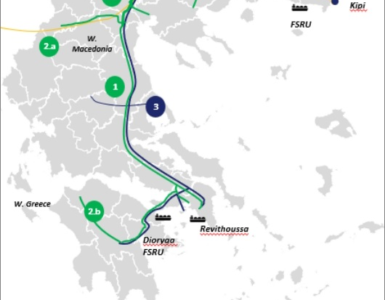Reuters – How Germany hydrogen economy could transform energy use.
German utility EnBW (EBKG.DE), opens new tab this week pledged 1 billion euros ($1.08 billion) to build pipelines to carry clean hydrogen as part of a plan for a nationwide grid that will start commercial operations by 2032.
Germany is betting on green hydrogen, produced through electrolysis driven by wind and solar power, as an alternative to fossil fuels.
For some, it is a gamble, for others a world-leading example.
The following outlines the progress so far.
WHY IS GERMANY CENTRAL TO EU HYDROGEN PLANS?
Germany is spearheading the European Union’s shift towards cleaner energy because it is the bloc’s biggest economy and exporter, with a reliance on industry for a third of its gross national product.
Advocates of the fuel say it will enable German products, such as cars or steel, to compete more effectively as pressure mounts from some consumers and investors for goods with greatly reduced carbon footprints.
The energy transition in Germany became urgent after its supplies of relatively inexpensive gas from Russia ended following the Ukraine war.
The country’s research and development has produced many patents for hydrogen over the last decade.
WHAT ARE THE WIDER USES?
The transport grid is just one element in a strategy that spans 10 gigawatts (GW) of domestic production capacity and an import strategy that will draw on supplies from elsewhere in Europe and overseas.
New gas-to-power generation plants that can switch to hydrogen will be put to tender by the end of 2024 or early next year.
Industry players in steelmaking and chemicals have plans to replace coal- and gas-based hydrogen with green hydrogen and utilities are adding electrolysis and import facilities to their investment portfolios.
WHO ARE THE PROTAGONISTS?
Some of the biggest players are steelmakers Thyssenkrupp (TKAG.DE), opens new tab, Salzgitter (SZGG.DE), opens new tab and ArcelorMittal, which plan to invest billions of euros in decarbonising steel production, betting on hydrogen’s availability.
Utilities are also among the leaders.
RWE (RWEG.DE), opens new tab plans 2 GW of electrolysis and 3 GW of hydrogen ready gas-to-power capacity by the end of 2030. Of its total investments of 55 billion euros by that date, 25% are for hydrogen, batteries and flexible power production.
Uniper (UN0k.DE), opens new tab has a deal with Salzgitter to provide it with hydrogen from an ammonia cracker at Wilhelmshaven.
WHAT ARE THE COSTS FOR CONSUMERS AND TAXPAYERS?
The total cost for the hydrogen network, including 9,666 kilometers of pipelines, is estimated at around 19.7 billion euros.
Including that and adding electrolysis plants and renewable capacity to feed electrolysers and storage, PwC gave a total of 65-80 billion euros of costs up to 2030 in calculations provided for Reuters.
Much of the money will have to come from utility companies’ balance sheets, from network usage fees borne by consumers, and from tax revenues as private financiers have so far proved reluctant.
Dirk Niemeier, a director and Lead for Clean Hydrogen and Alternative Fuels at PwC in Germany, said:
The business case for German hydrogen projects is not easy. The banks are asking for customers and secure returns.
“If there is no prospect, investments cannot be made.”
WHY THE RELIANCE ON IMPORTS?
Germany, with a lack of its own fossil reserves, has traditionally been an energy importer and has already a network of partners.
For hydrogen, it can draw on existing trade relationships with Britain, Norway and the Netherlands and is building new alliances with southern Europe and North Africa, as well as Australia, Canada and Chile.
McKinsey made data available to Reuters showing that hydrogen production costs in Germany could be $10 a kilogram in 2030, higher than the cost of $3-8/kg for imports as countries with cheap renewable power and low labour costs can make green hydrogen relatively cheaply.
Grey hydrogen made from gas of which Germany uses some 42 TWh each year, costs around $3/kg, indices show.
WHAT ARE OTHER COUNTRIES DOING?
Britain, Denmark and Norway are expected to supply Germany with green or blue hydrogen. The latter is produced using natural gas in a process where the CO2 released in production is captured and stored.
Italy, Spain and the Netherlands have elaborate strategies for their own and neighbouring markets.
The U.S. is investing billions of dollars and so is China.
READ the latest news shaping the hydrogen market at Hydrogen Central
Reuters – How Germany hydrogen economy could transform energy use. source









